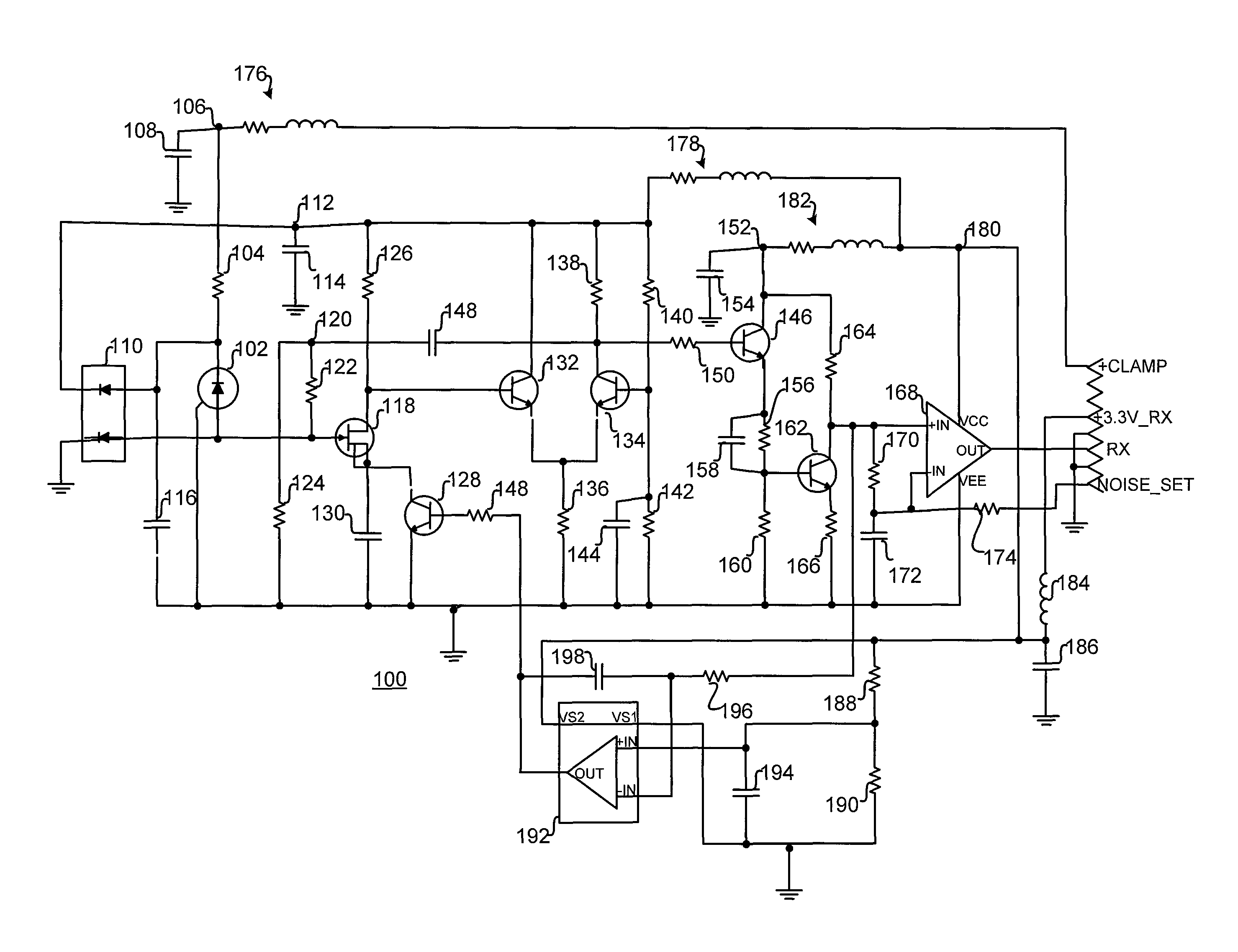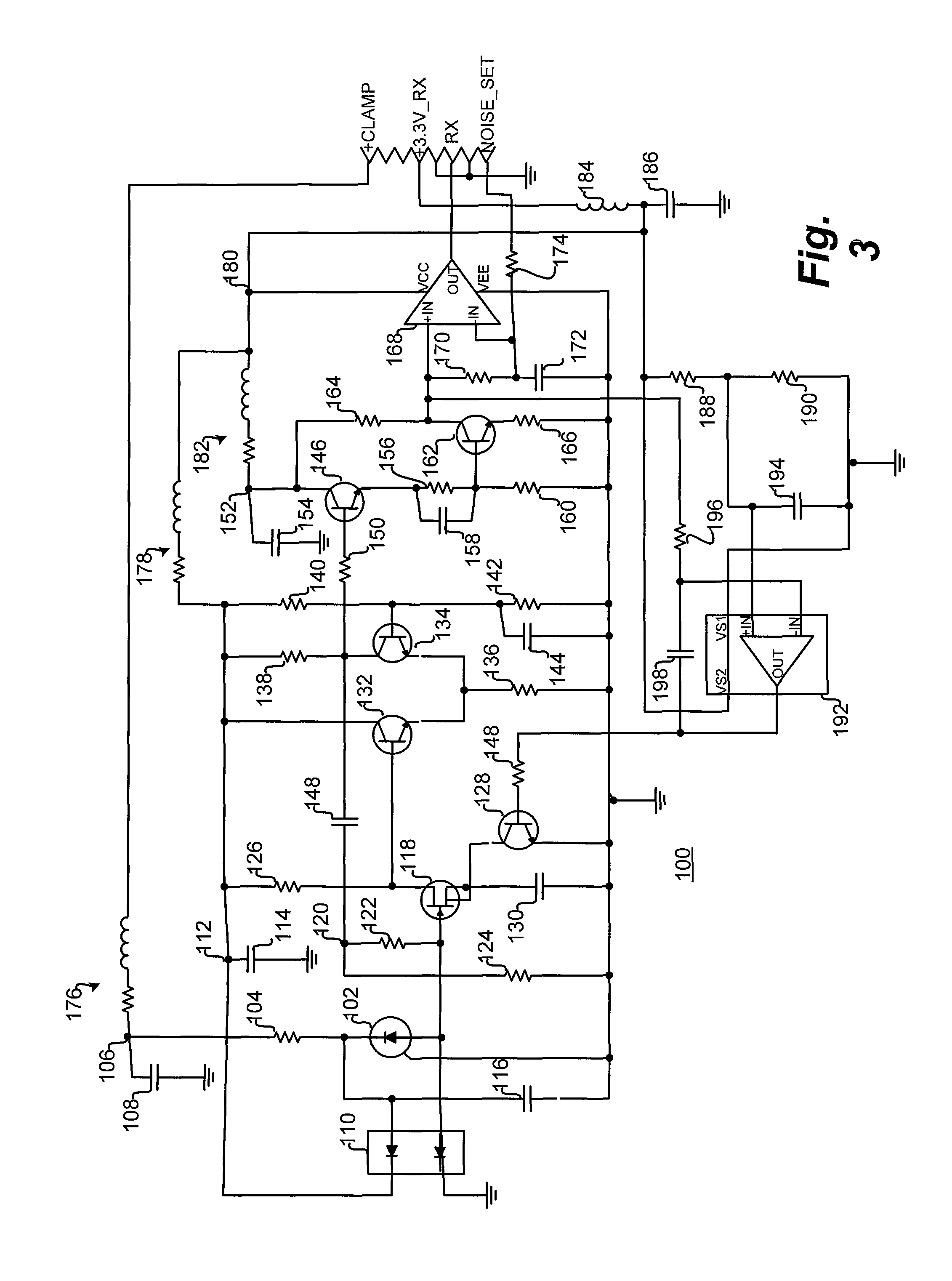Non-saturating receiver design and clamping structure for high power laser based rangefinding instruments
a laser rangefinder and receiver technology, applied in the field of laser based rangefinders, can solve the problems of severe saturation problems, easy saturation of the returned signal, and complicated conventional monoblock laser receiver designs, and achieve the effect of fast recovery and fast visibility of subsequent pulses
- Summary
- Abstract
- Description
- Claims
- Application Information
AI Technical Summary
Benefits of technology
Problems solved by technology
Method used
Image
Examples
Embodiment Construction
[0017]With reference now to FIG. 1, a simplified, side elevational view of the receiver 10 portion of a rangefinding device in accordance with an embodiment of the present invention is shown. The receiver 10 receives laser signals which have been reflected by a target as emitted by an associated monoblock laser transmitter 22.
[0018]The reflected laser signals are received along a receive path 12 through receiver optics 14 comprising a series of collimating lenses as illustrated. In the folded optical path configuration shown, the reflected laser signals are directed toward a receiver mirror 16 and then redirected 90° toward a receiver photodiode 18 affixed to a circuit board 20.
[0019]With reference additionally now to FIG. 2, a more detailed, isometric view of additional portions of the rangefinding device of the preceding figure is shown. Structure and elements previously described with respect to the preceding figure are like numbered and the foregoing description thereof shall su...
PUM
 Login to View More
Login to View More Abstract
Description
Claims
Application Information
 Login to View More
Login to View More - R&D
- Intellectual Property
- Life Sciences
- Materials
- Tech Scout
- Unparalleled Data Quality
- Higher Quality Content
- 60% Fewer Hallucinations
Browse by: Latest US Patents, China's latest patents, Technical Efficacy Thesaurus, Application Domain, Technology Topic, Popular Technical Reports.
© 2025 PatSnap. All rights reserved.Legal|Privacy policy|Modern Slavery Act Transparency Statement|Sitemap|About US| Contact US: help@patsnap.com



